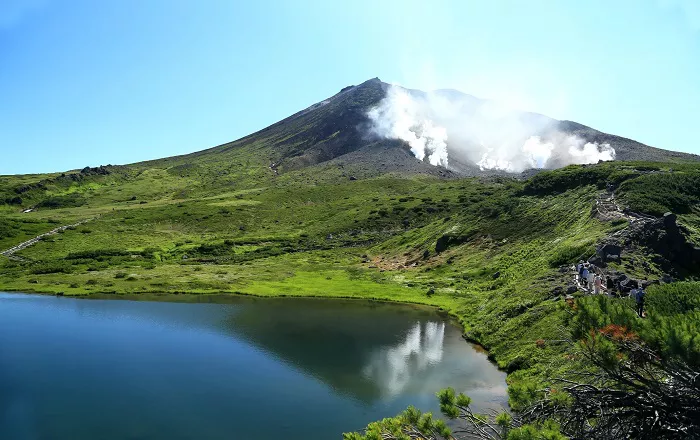In the rugged heart of Hokkaido, Japan’s northernmost main island, hikers navigating the vast wilderness of Daisetsuzan National Park contend with a formidable mix of weather, terrain, and wildlife. This protected area, known in Japanese as “great snowy mountains,” is the country’s largest national park and features 16 peaks rising above 2,000 metres—several of which rank among Japan’s 100 Famous Peaks, the Hyakumeizan.
A recent multi-day, 50km traverse through the park’s alpine spine illustrated both the park’s stark beauty and its many perils. The route crossed exposed ridgelines, steam-spewing volcanic summits, and boulder-strewn slopes, all beneath an expansive and unpredictable sky.
Black bears are a common threat in much of Japan, but in Hokkaido, hikers must also watch for brown bears, which can exceed 300kg. Japan’s brown bear population has more than doubled over the past three decades, reaching an estimated 11,700 by 2020. According to the Ministry of the Environment, a record 219 people were attacked by bears in the year leading to March 2024—six fatally. As a result, trekkers in Daisetsuzan typically carry bells and pepper spray as a precaution.
The journey began on Asahidake, Hokkaido’s tallest peak at 2,291 metres, with a gondola ride that offered a head start on the ascent. Laden with heavy packs containing supplies for four days, hikers climbed through sulphuric geothermal vents that cloaked the trail in acrid steam. Tourists in trainers and light gear, unburdened by camping equipment, darted up and down the trail with ease.
Beyond the summit, the landscape quickly turned wild and desolate. A steep, sandy descent into a broad valley led to a dry campsite, where recent warnings had prompted the purchase of extra water—an added weight that proved invaluable. With limited snowmelt and strict environmental regulations prohibiting waste burial and dishwashing in streams, water was both a necessity and a burden.
Camp life was austere. Some designated sites provided drop toilets; others only privacy shelters requiring visitors to pack out their waste. Even meals were dictated by conservation—cold breakfasts and restrained hydration to conserve precious supplies.
Clear skies returned the following morning, revealing a landscape of dwarf pines, lingonberries, and the transforming seed pods of the Aleutian avens. After cresting the 2,230-metre peak of Hakuundake, hikers paused at a bright red refuge hut for lunch and replenishment at a nearby spring.
Late afternoon brought mist and a chilling arrival at Chubetsudake hut, where the evening was spent drying gear and resting sore muscles. But by dawn, a cold rain had set in and the stream had vanished—forcing another round of rationing. A downloaded satellite weather forecast warned of incoming storms. The group altered plans, opting for a shorter route to a hut rather than attempting to camp.
Such caution was not unfounded. In July 2009, 10 hikers perished on the same trail after ignoring worsening conditions. The tragedy, which claimed lives due to hypothermia, underscores the unpredictable and often unforgiving nature of the park’s high-altitude environment.
Signs of wildlife remained close. Fresh bear droppings spotted on the trail, undisturbed by the rain, suggested a recent visitor. The bear itself never appeared, but the tension remained palpable.
A refuge hut at Hisagonuma, beside a serene alpine lake, offered shelter from the storm. As rain lashed the hut and wind howled across the mountains, hikers took stock of supplies and welcomed fellow travelers—three university students and, later, two drenched hikers who had braved the storm for 10km.
When the weather finally cleared, the last day proved the most challenging. The trail climbed over refrigerator-sized boulders and dipped through valleys, offering breathtaking vistas of snow-streaked peaks and glacial lakes. A punishing 10km descent from Mount Tomuraushi led through dense birch and spruce forest, where late-season blueberries dotted the path.
Lighter packs and tired legs marked the end of the trek, but the echo of bear bells through the woods signaled more than just the end of a journey—it was a reminder of the balance between awe and danger in Japan’s wildest national park.

